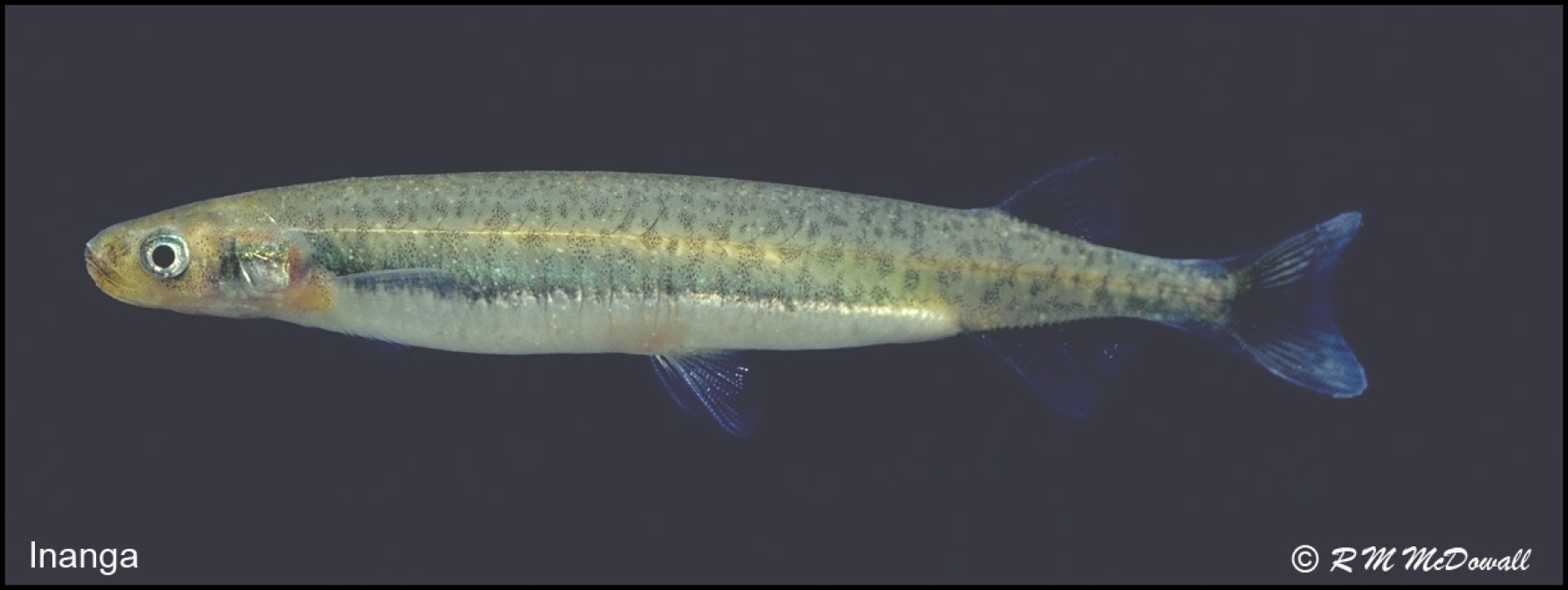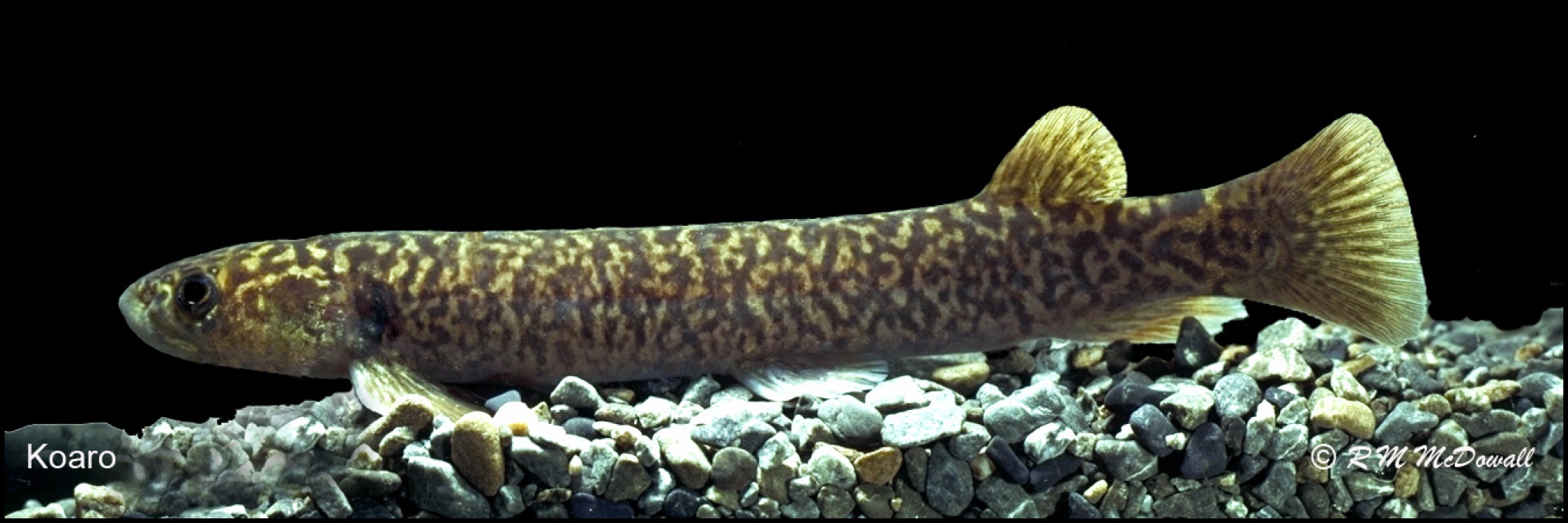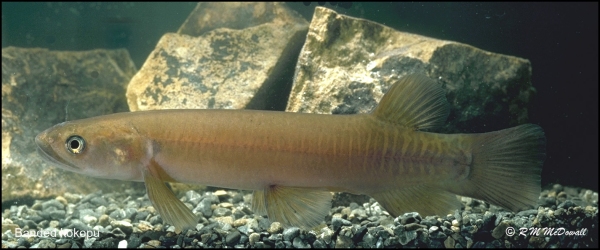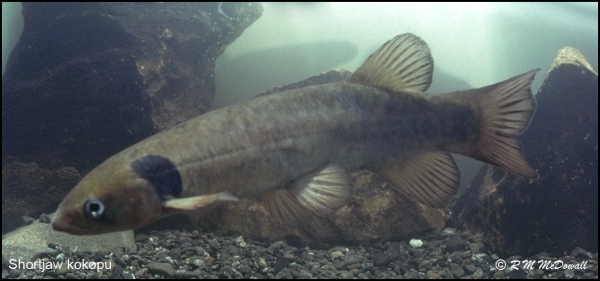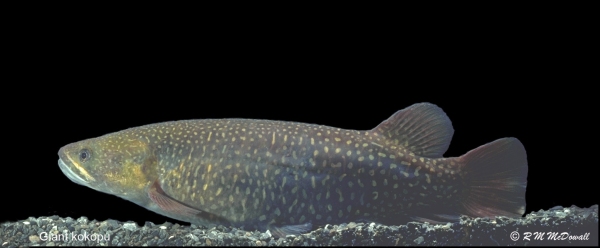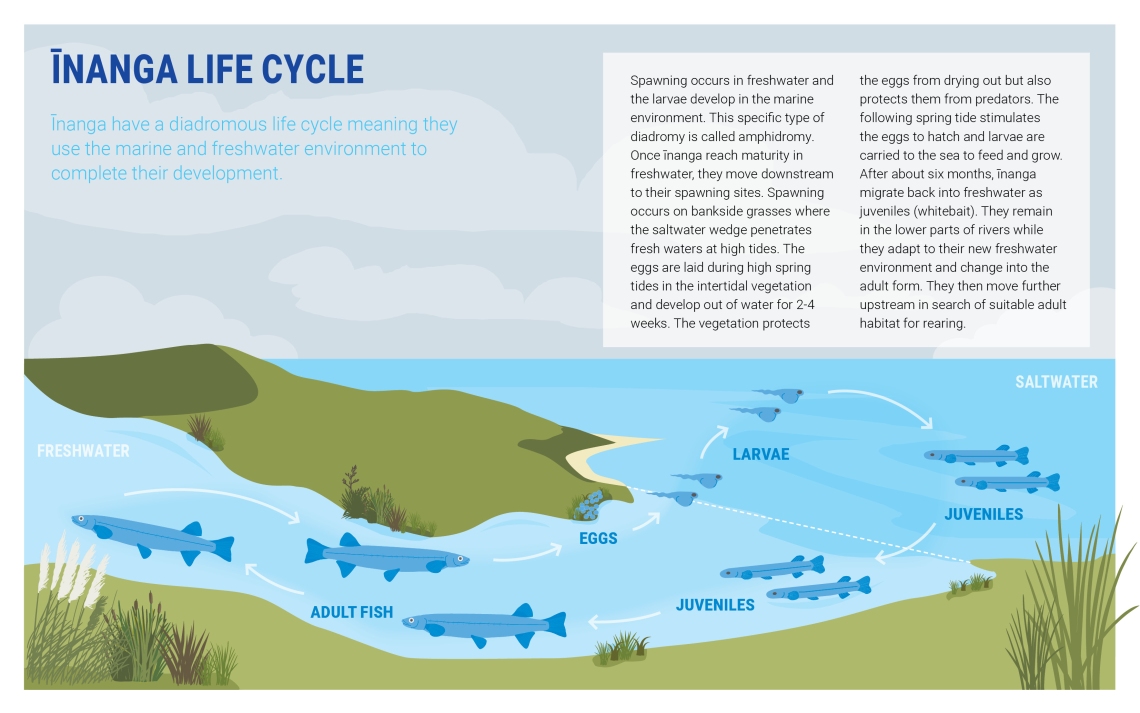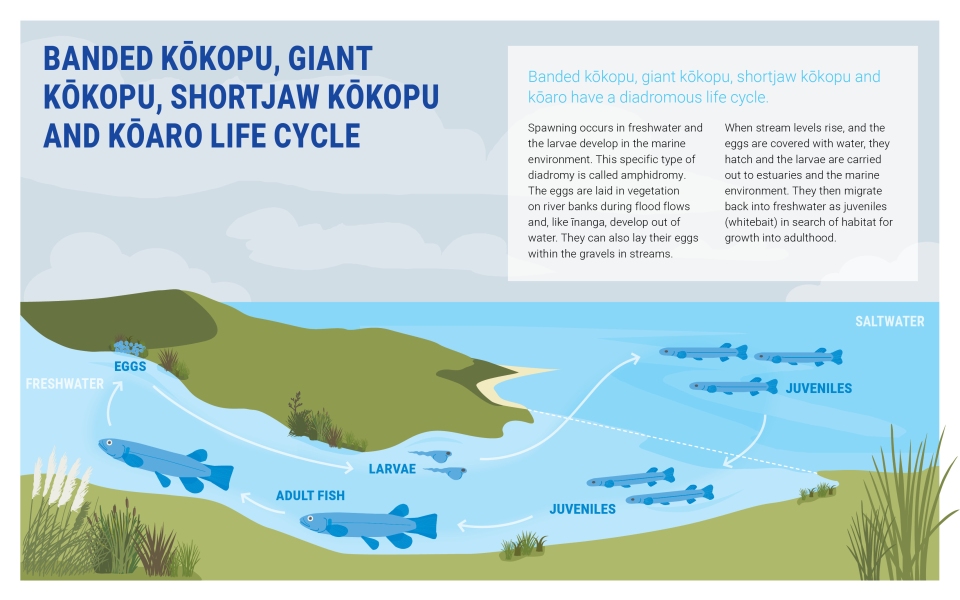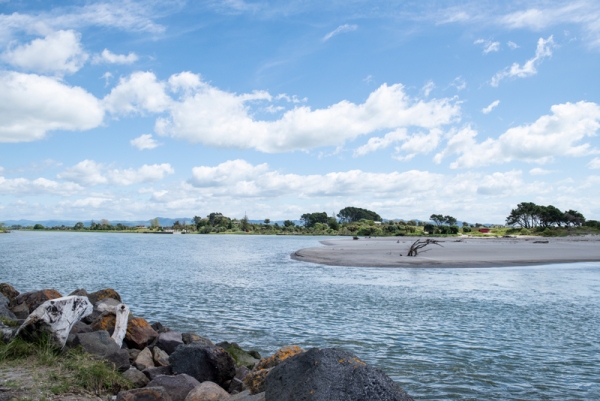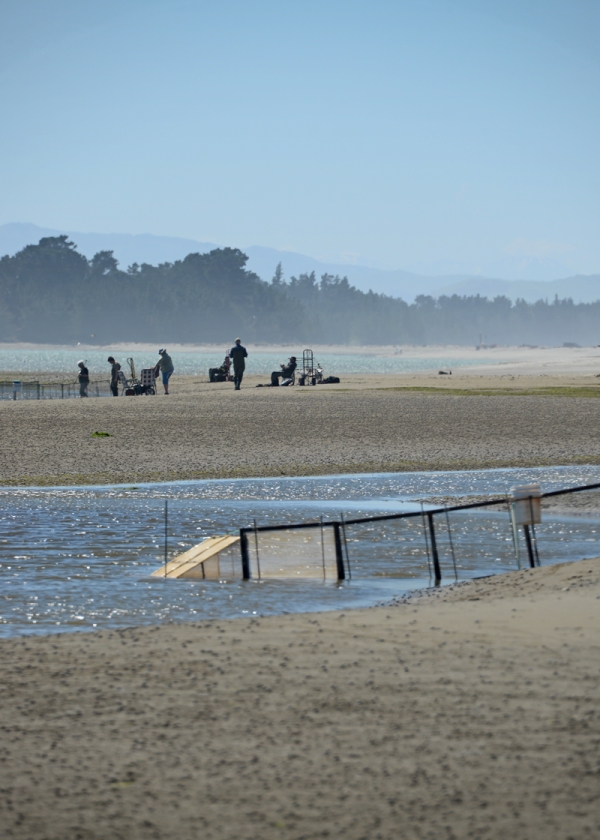On this page
Aotearoa - New Zealand's five galaxiid species
Whitebait fisheries are based on the juvenile, upstream migrant phase of five species of galaxiid fish. The annual whitebait migration is an important mahinga kai resource for Māori all around Aotearoa.
Galaxid species
Where can the whitebait species be found in Aotearoa?
Whitebait species can be found throughout Aotearoa but are generally common around coastal areas as part of their life cycle occurs at sea. Some species of whitebait can have a varied distribution to other species based on their climbing ability, habitat preference and other factors.
Īnanga
Īnanga are the most abundant whitebait species and are widely distributed in Aotearoa. Īnanga can migrate well inland in some rivers but are normally considered a coastal species. They are the smallest of all whitebait species, usually reaching 100-110mm. Found in most rivers and streams in Aotearoa they form the bulk of the whitebait catch.
Shortjaw kōkopu
Shortjaw kōkopu are only found in Aotearoa. They are the rarest of the whitebait species and have the most restricted distribution. Shortjaw kōkopu are mostly found along the west coast of the South Island, the top of the South Island and the Taranaki region. They do not occur on Stewart or Chatham Islands.
Kōaro
Kōaro are found in freshwaters at higher elevations in Aotearoa such as mountainous streams. They are also found on Chatham, Stewart, Campbell and Auckland Islands. Kōaro prefer clear, swiftly flowing streams of small to moderate size that flow through native forest.
Giant kōkopu
Giant kōkopu are only found in Aotearoa but have a fragmented distribution. They are mostly found along the west coast of the North and South Island as well as major offshore islands. However, they are absent from Fiordland and the east coast of the South Island. Giant kōkopu prefer coastal freshwater habitats and are not usually found far inland.
Banded kōkopu
Banded kōkopu are primarily a coastal species and prefer forested streams with pools and undercut banks. They are found throughout Aotearoa especially on the west coast of the North and South Islands. However, they are rare along the east coast of both islands with few observations from East Cape.
Īnanga life cycle
Īnanga have a diadromous life cycle meaning they use the marine and freshwater environment to complete their development.
Spawning occurs in freshwater and the larvae develop in the marine environment. This specific type of diadromy is called amphidromy. Once īnanga reach maturity in freshwater, they move downstream to their spawning sites.
Spawning occurs on bankside grasses where the saltwater wedge penetrates freshwaters at high tides. The eggs are laid during high spring tides in the intertidal vegetation and develop out of water for 2-4 weeks. The vegetation protects the eggs from drying out but also protects them from predators. The following spring tide stimulates the eggs to hatch and larvae are carried to the sea to feed and grow.
After about six months, īnanga migrate back into freshwater as juveniles (whitebait). They remain in the lower parts of rivers while they adapt to their new freshwater environment and change into the adult form. They then move further upstream in search of suitable adult habitat for rearing.
Banded kōkopu, giant kōkopu, shortjaw kōkopu and kōaro life cycle.
Banded kōkopu, giant kōkopu, shortjaw kōkopu and kōaro have a diadromous life cycle.
Spawning occurs in freshwater and the larvae develop in the marine environment. This specific type of diadromy is called amphidromy. The eggs are laid in vegetation on river banks during flood flows and, like īnanga, develop out of water. They can also lay their eggs within the gravels in streams.
When stream levels rise, and the eggs are covered with water, they hatch and the larvae are carried out to estuaries and the marine environment. They then migrate back into freshwater as juveniles (whitebait) in search of a habitat for growth into adulthood.
Galaxiid migration
Migratory A portion of whitebait populations are diadromous meaning their life cycle is completed in the marine and freshwater environment. Scientists can confirm if larvae whitebait have developed in the sea by looking at the chemistry of their ear bones which take on a unique marine signature.
The migrations of the whitebait species occur in all months of the year but there are key differences between the five species.
Non-migratory
There are some populations of the whitebait species that complete their entire lifecycle in freshwater and do not need to go to the sea. These populations are known as lacustrine (i.e. lake-based) or landlocked (i.e. they can’t access the sea).
After the larvae hatch in tributary streams, rather than moving out to sea, they move downstream to lakes and rear there. As juveniles, they move out of the lakes again and into nearby streams where they then grow into adults. This is common for kōaro and kōkopu species.
What habitats do the adults use?
The five galaxiids are found in a diversity of freshwater habitat types such as rivers, streams, wetlands and lakes.
There are differences in the preferred habitats among the galaxiids. For example, shortjaw kōkopu prefer to live in boulder-filled streams in the forest while īnanga can be found in small agricultural streams much closer to the sea.
Kōaro are known for their climbing abilities. They can travel much further inland than the other galaxiid species and can even be found in mountainous lakes and rivers in the Southern Alps. They can easily overcome obstacles such as waterfalls and use their large fins to help them climb.
Galaxiids like lots of vegetation to protect them from larger predators and to use as camouflage to sneak up on their prey.
What do galaxiids eat?
During their marine life phase, larval galaxiids likely eat small phytoplankton and zooplankton. Once they have achieved enough growth at sea, they migrate through estuaries and into freshwater.
Whitebait are an important source of marine-derived nutrients for other fish species like kahawai, tuna, and native birds.
Adult galaxiids eat a combination of insects, crustaceans (such as kōura), and sometimes smaller fish. The five galaxiids species have slightly different diets. The three kōkopu species mainly eat insects that fall into the water from overhanging grasses and trees (such as spiders and flies). This is because kōkopu have special sensors on their heads that let them know when and where something has hit the water’s surface.
Our whitebait fishery
A whitebait fritter could contain the young of all five galaxiids species.
Usually, 95% of the whitebait in a whitebait fritter will be īnanga, with the remaining 5% made up of kōaro and banded kōkopu. Giant kōkopu and shortjaw kōkopu are rarely observed in the whitebait catch and they are very difficult to identify. Whitebait are caught as they are migrating from the sea as juveniles into freshwater to begin adulthood.
Whitebait fishing regulations
It is important to follow the whitebait fishing regulations:
- Whitebaiting is only allowed during whitebait fishing season. Taking whitebait at all other times is prohibited.
- New Zealand whitebaiting season - 1 September to 30 October (inclusive).
- Chatham Islands whitebaiting season - 1 December to the last day of February (inclusive).
- Whitebaiting is allowed from 5 am to 8 pm or 6 am to 9 pm during daylight savings.
- Whitebaiting is only allowed in tidal waters.
- Fishing gear needs to follow the whitebait guidelines.
- Only take the fish you need and return unneeded fish to the waters they were taken from.
- Following regulations is important because it ensures we sustain the galaxiid populations.
For more information on whitebait fishing regulations visit: https://www.doc.govt.nz/parks-and-recreation/things-to-do/fishing/whitebaiting
What can we do to help?
Some ways we can help our whitebait populations include:
- Protect and restore riparian environments to provide habitat for egg-laying
- Follow whitebait fishing guidelines and regulations
- Restore upstream passages to give whitebait more accessible waterways to live in
- Keep waterways clean
- Remove pest fish and plants that alter the whitebait’s habitat
- Get involved in a community project to fence and plant local streams
- Follow harvest regulations and any rāhui in place.
Download
- Īnanga: What does science tell us about New Zealands' migratory galaxiids? (PDF 3.84 MB)
- Īnanga lifecycle poster (PDF 1.2 MB)

